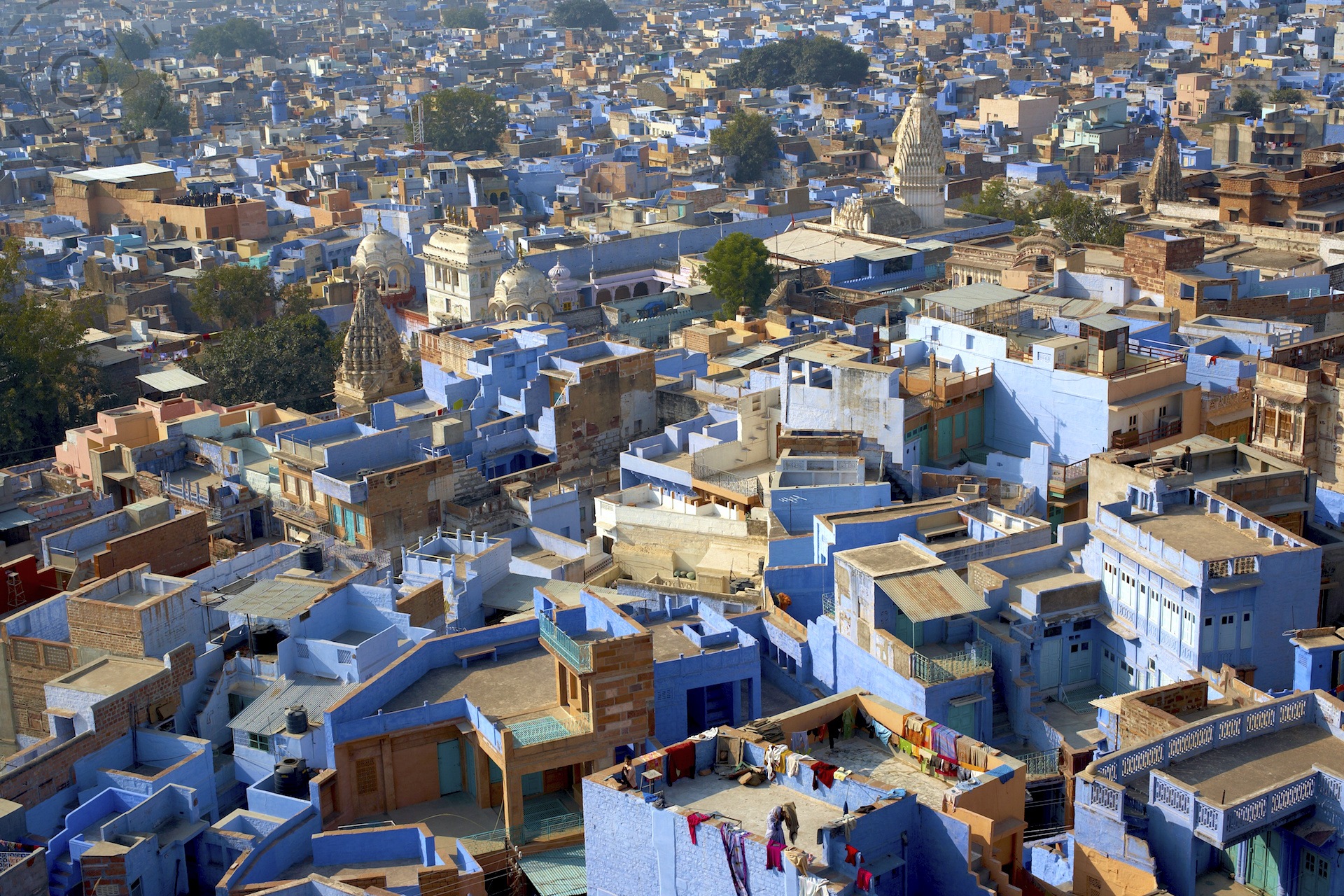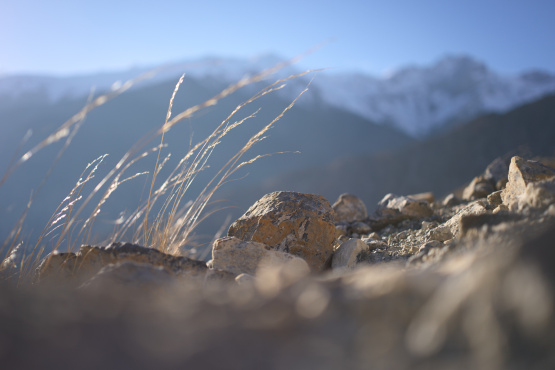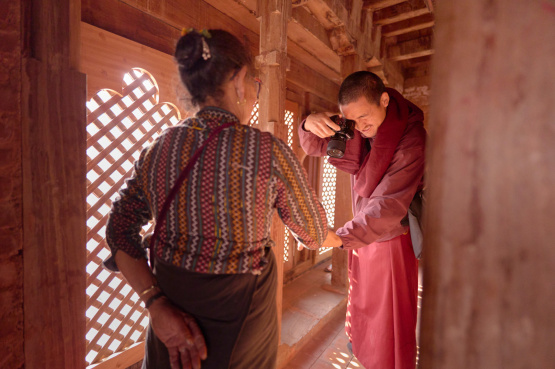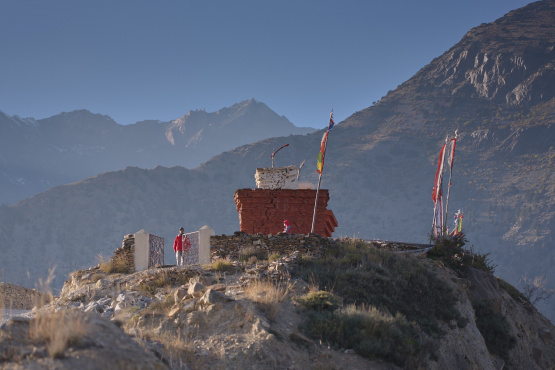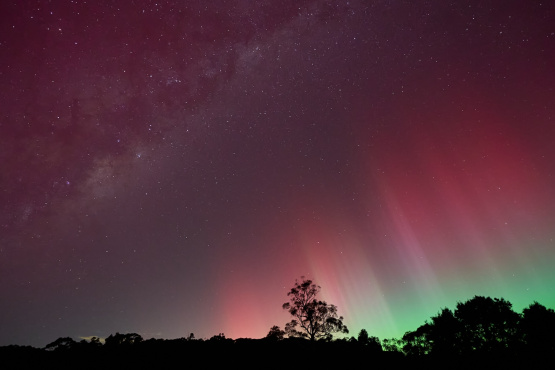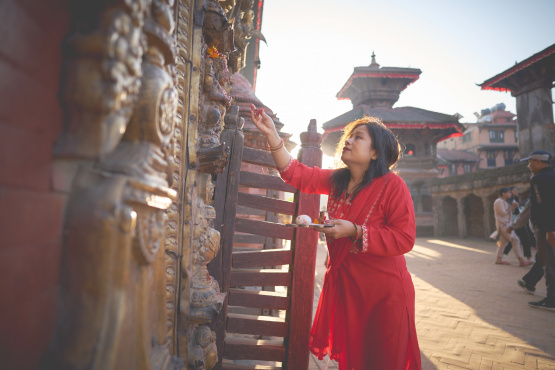Between the orange cart and sari-stall a chapati wallah cooks his freshly kneaded dough while hungry customers watch on.
Ten rupees buys one chapati, a round flat bread freshly cooked on the top of a charcoal heated plate. A filling lunch of three chapatis costs less than a dollar, and the dahl and chili chutney is no extra charge. Chapati man doesn't speak any english, which is not uncommon in the less touristy parts of India.
I earn a wry smile from him when I devour the first chapati and ask for another one, and the young boys standing next to me just stare and grin.
The youngest lad yells out at the chef and waves his hands about, and suddenly another dish of hot mango-chutney lands in front me. This time it's got some eggplant and mustard seeds blended through. The boys give me a thumbs up and a smile to wish me an enjoyable lunch.
Within seconds of taking a bite my mouth is on fire. Chili spreads down my throat and for a second I can't breath, and when I do gasp air into my lungs it feels like I've poured gasoline onto the flames. My tongue is numb, my eyes are about to pop out of my head and the young lad next to me is jumping up and down with laughter.
To add insult to injury he grabs my bowl of chutney and dips his chapati into it, swallowing a huge chunk of spicy mango right in front me. Even the chapati wallah thinks this is funny.
For the same price as a chapati you can buy a freshly squeezed juice, so I head inside the Sadar Bazaar in search of the juice wallahs. These guys make a living by squeezing seasonal fruits into tall glasses of naturally sweet juice. In comparison to other refreshments sold in Jodhpur the juices are miraculously healthy.
Oranges and apples make up the bulk of treats found on the streets, while more exotic combinations with ginger, carrot and pomegranate make guest appearances at the market stalls. There's no such thing as an ice-cold drink in Rajasthan, but a little sweet liquid brings some relief to my post-chapati taste buds.
I wasnt the only one with a sweet tooth wandering the streets of Jodhpur that day. A seven tonne elephant named Bagu is taken around the fringes of the market each day to collect donations. Charity in India is based on asking for just a little, but from as many people as possible.
Every veggie vendor and fruit stall offers a small sample of their goods and the elephant moves on to the next one. Outside the nut-shop the elephant's mahout start chatting with the owner, giving Bagu enough opportunity to stretch his trunk over to a poorly monitored cart and raid the green tomatoes.
Dozens of them go rolling across the street and dozens more get quickly shovelled into Bagu's mouth. There's a little yelling and screaming between the mahout and the irate vendor, and it is agreed that the elephant must move on without delay. Charity is one thing, trunk-lifting is another.
I followed Bagu for a few blocks as he wandered around the old town. It's easy to get lost in the narrow lanes of Jodhpur, and almost every building is coated in blue-wash which makes it doubly difficult to remember a landmark. If you really get lost the trick is to climb up to one of the rooftop restaurants and check the direction of the fort.
Mehrangarh Fort is one of the most impressive in all of Rajasthan. It dominates the horizon, looming above the old town of Jodhpur on a granite ridge. Inside the fort is a museum to the majestic centuries of Rajputs and Palaces. It takes the best part of a day to explore the fort properly, plus you get a birds eye view of the city below and a genuine appreciation for why the call Jodhpur the blue city.
Entire suburbs are washed in the same hue of blue, a mix of indigo and powdered lime that aims to trick the mind into thinking such houses must be very cool in the summer. Reality is that Rajasthan is a very cold place in the winter months and stifling hot in the summer, which is why the months of February and November are peak season for travellers.
Outside the walls of the fort a couple of small temples perch themselves on a remote tip of granite. They are peaceful places far away from the crowded city below, each with their own sacred story of hindu gods to share with visitors. Foreigners are welcome, just take your shoes off and have a chat to the Brahmin.
Up here beside the fort there are no cows blocking the road, no horns beeping pedestrians and no spice vendors trying to sell you a souvenir. When dusk falls there is just one sound to be heard, the announcement of mosques throughout the city as they make their evening call to prayer.
The moment the sun disappears over the horizon every minarette in the old-town begins to echo words of worship. Unfetted by streets and walls the sound converges upon the open skies surrounding the fort and the blue city suddenly becomes a symphony.
In the dim light of the evening I wander back through the laneways in search of my hotel. The clocktower of the market acts as my guide to bring me back safely, and as I enter the hotel gates I see my chapati wallah wheeling his cart home for the night.
He gives me a wave, has one more laugh at my expense and then says goodbye. I have learned my lessons well today - the best juice in town is at the fruit market, beware of hungry elephants and go easy on the mango chutney when you're ordering chapati.

Keep Reading
Join Ewen's newsletter for monthly updates on new photography articles and tour offers...Subscribe Here

